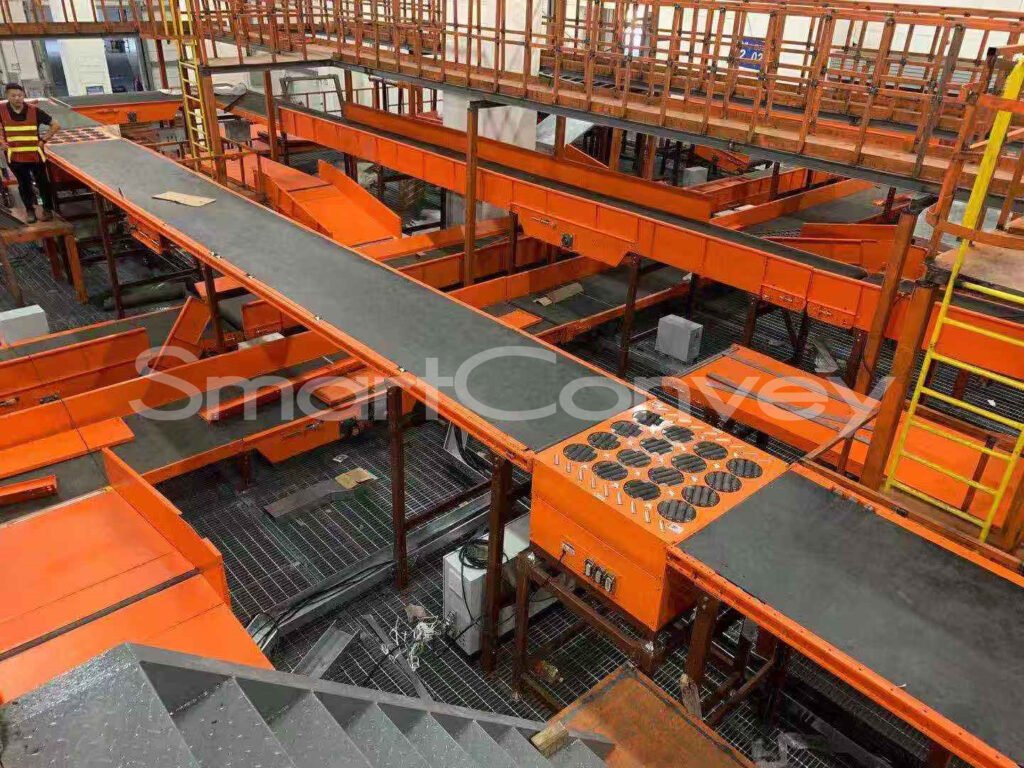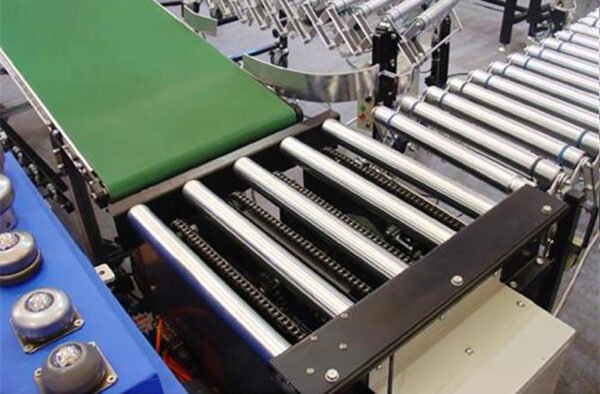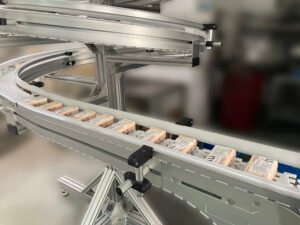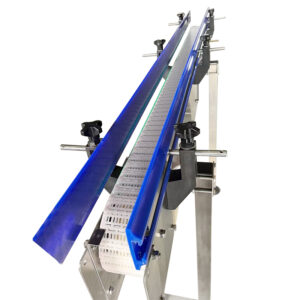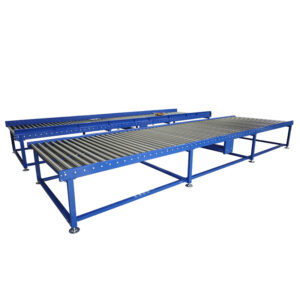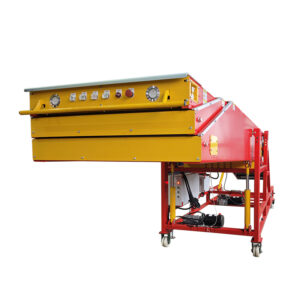Nowadays, the logistics industry is rapidly developing in line with the concepts of “smart factory” and “industrial Internet of Things”, industrial logistics equipment is widely available and demand is rapidly increasing, and professional logistics and storage technology services have become a hot spot in the industry.
As an excellent supplier to the logistics equipment industry in China, we are here today to summarise the commonly used logistics sorting equipment and share their advantages and disadvantages so that our customers can better choose the right product for them.
There are 3 common types of logistics sorters on the market:
1.0 O-Belt Wheel Sorter
This is the first-generation wheel sorter and the most used logistics sorting conveyor on the market. It has the advantages of compact structure, smooth and stable sorting, and independent control; however, some of its shortcomings also show up in the actual use process.
Specification:
| Capability | Depends on Parcel Dimensions |
| Conveying Speed | 60~120m/min (Adjustable) |
| Diverting Angle | 30~90 Degree |
| Discharge Direction | Right, Left and Forward |
| Operating Temperature | -10~40 Degree |
| Electrical | 1-phase 112/230 VAC,50~60HZ |
| Interface Options | RS485/232, Ethernet |
| Max Loading Weight | 30Kg |
| Noise | Less than 70dB |
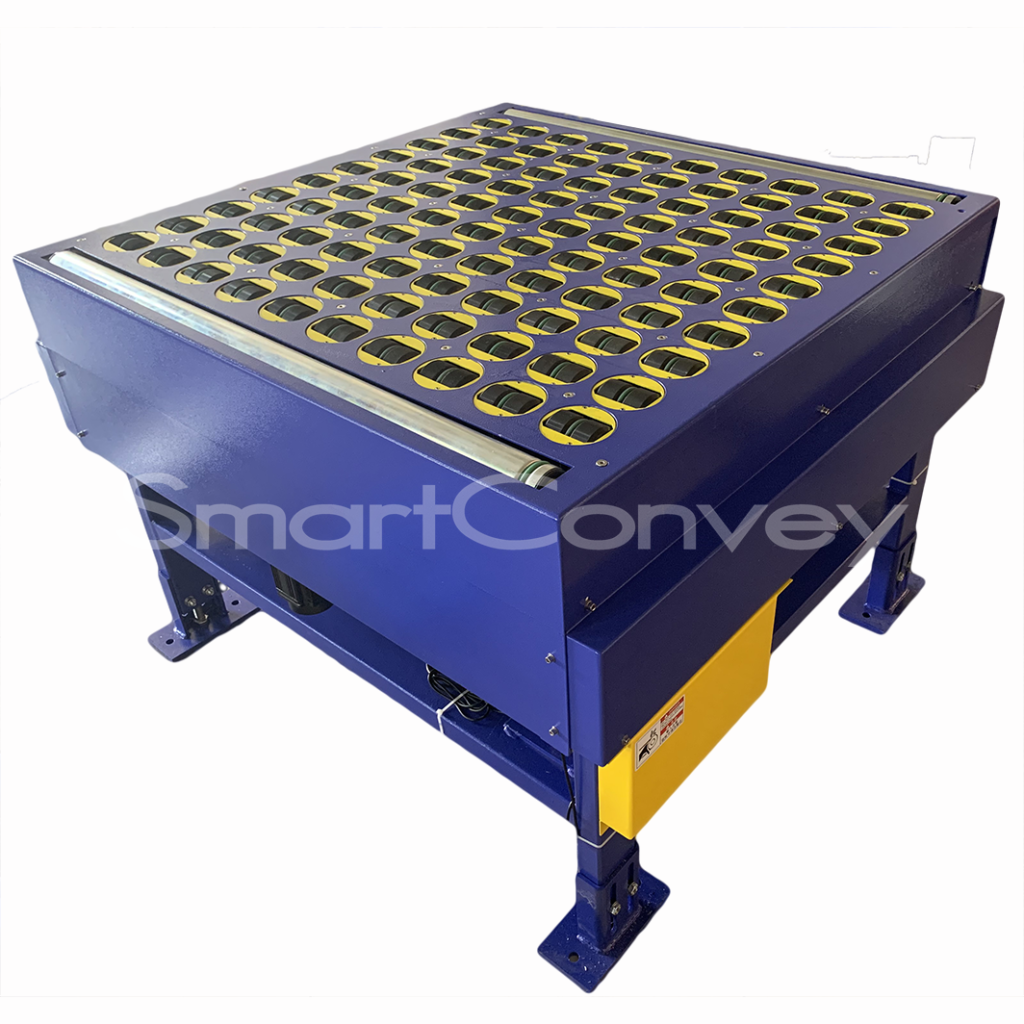
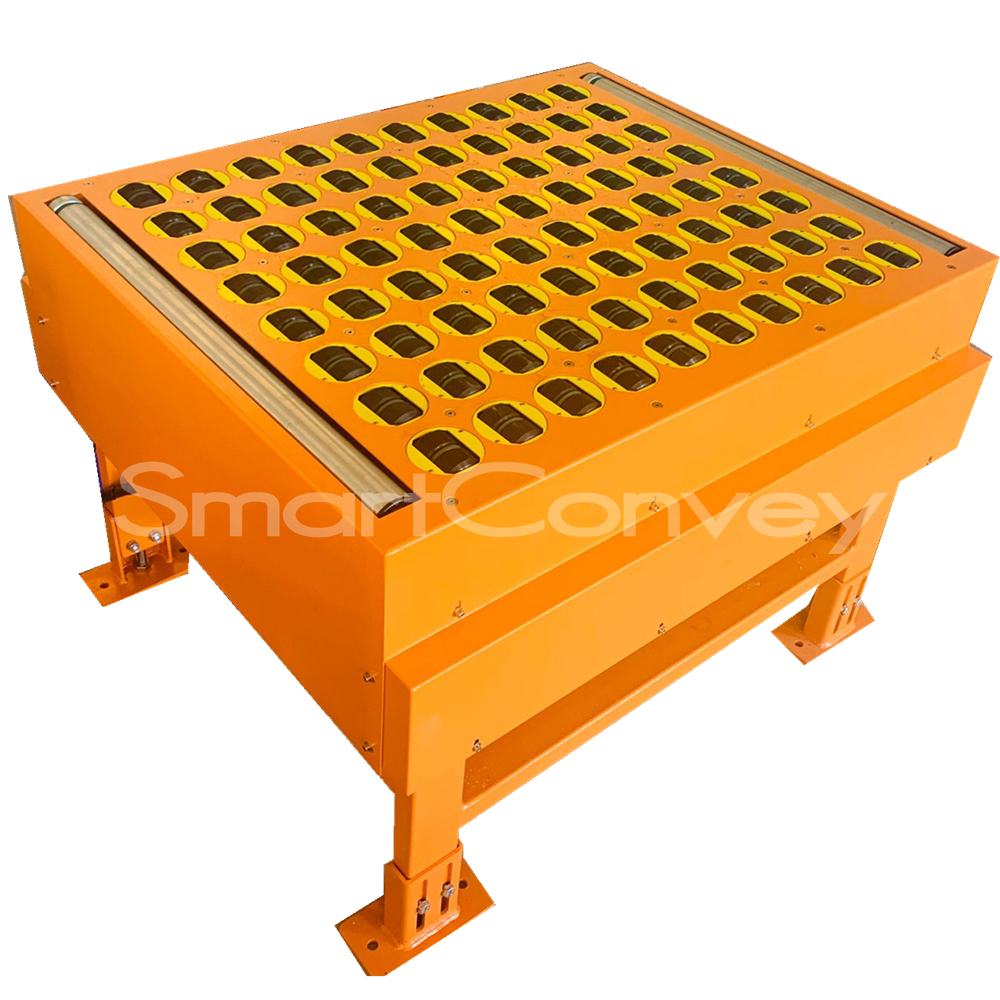
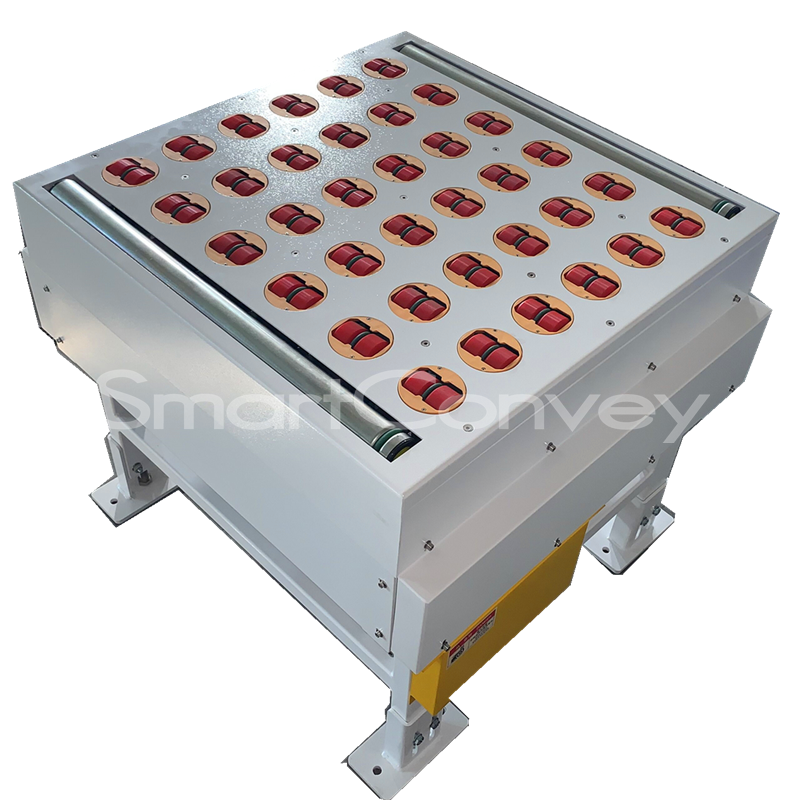
Advantage:
- Durable: O-Belt is made in a whole piece, molding without any contact ensures a longer service life.
- High sorting rate: the switch to height and bi-directional design allows sorting on both sides at the same time. The maximum sorting speed can be 7200 pieces/hour (theoretical value).
- Low noise: new environmentally friendly materials and noise reduction technology, noise level as low as 75dB.
- Energy-saving Lightweight materials low energy consumption design construction and low power (conveyor belt) allow for successful drives.
- Flexible and stable sorting operation in-line multi-tap gimbal technology prevents vibration and damage to loose goods. Stable and flexible sorting of goods in the range of light loads to heavy loads of up to 30 kg.
- With the easy layout and maintenance of the modular design of the units and the embedded combination structure, the sorting outlets can be placed anywhere on both sides of the conveyor line.
Disadvantage:
- In-plant maintenance, 1 unit replaces a new O-belt, which takes 1 hour. If there are 10 sets of O-belt wheel sorters in the plant, a short plant shutdown is required to guarantee continuous operation later on.
- The heaviest sorted goods are 30 kg, but today’s logistics can reach 50kg for large parcels.
2.0 Electrical Wheel Sorter
This is the next evolution of the O-belt wheel sorter and is our main product. It replaces the long maintenance and lightweight of the O-belt wheel sorter and is polyurethane coated with a non-slip surface for more stable operation.
Specification:
| Capability | Depends on Parcel Dimensions |
| Conveying Speed | 30~155m/min (Adjustable) |
| Diverting Angle | 30~90 Degree |
| Discharge Direction | Right, Left and Forward |
| Operating Temperature | -10~40 Degree |
| Electrical | 1-phase 115/230 VAC,50~60HZ |
| Interface Options | RS485/232, Ethernet |
| Max Loading Weight | 70Kg |
| Noise | Less than 70dB |

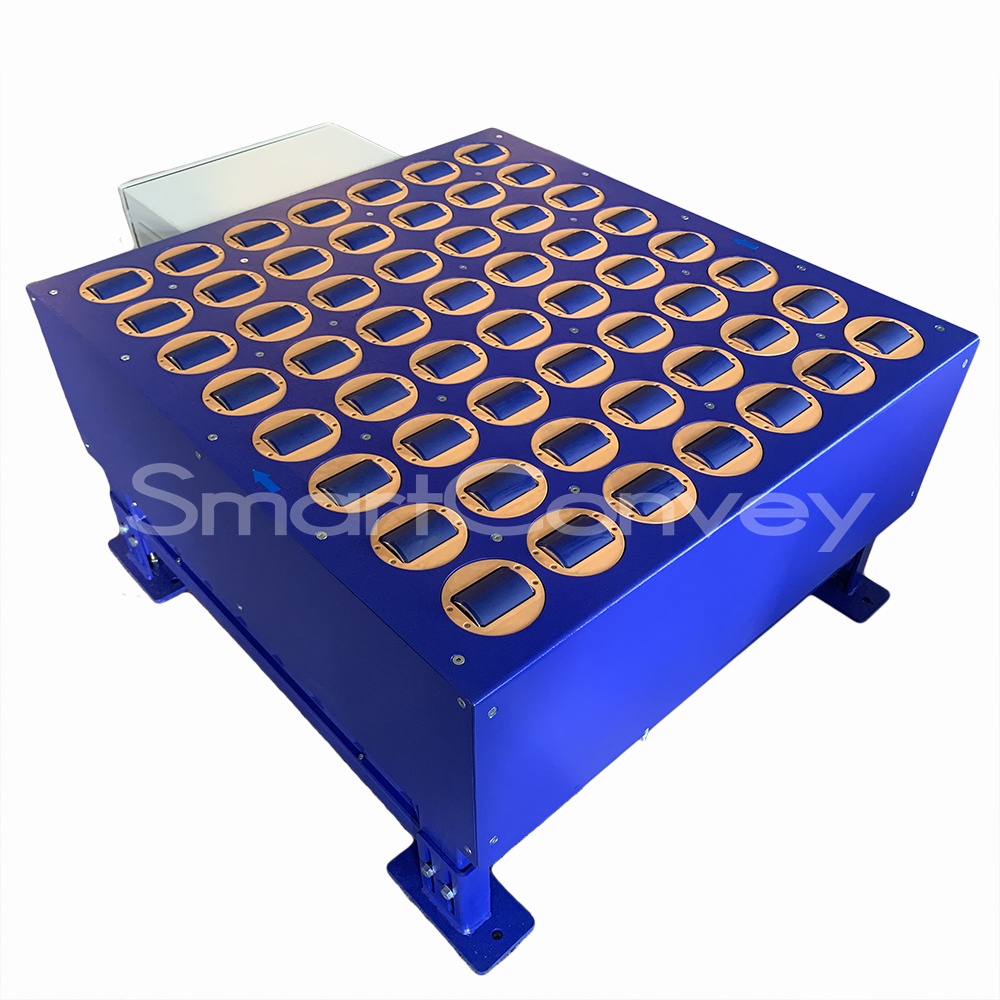

Advantage:
- High Sorting Rate Designed for high-speed sorting operation on both sides at the same time. The maximum Sorting package can reach 7200 pieces/hour.
- Low Noise Using new material and noise elimination technology good for the environment, noise can be less than 70 DB.
- Energy Conservation and Environmental Protection Lightweight material, low energy consumption structure, low power, and source power (conveyor) drive to achieve successful operation.
- Flexible and Stable Sorting Operation With online double-row swivel wheel technology, it prevents conveyed goods from vibration and damage stably and flexibly, weighing from lightweight to a maximum of 50kg package.
- Easy Layout and Maintenance Counting on unit modular design and embedding combination structure, it is easy for sorting positions to be placed at any point along both sides of a conveyor line. The product is more reasonably, simply, conveniently used, and maintained.
Disadvantage:
- In the maintenance of equipment, replace a new independent roller around 10mins.
- This is the most expensive unit compared to the other two types of wheel sorter.
3.0 Electrical Friction Wheel Sorter
This is another innovation after the 2.0 electric drive sorter, each disc is an independent power unit, a custom disc, for angles from 0 to 90, its resolution is less than 1 degree, it is our new and one of the main products.
Specification:
| Capability | Depends on Parcel Dimensions |
| Conveying Speed | 30~155m/min (Adjustable) |
| Diverting Angle | 30~90 Degree |
| Discharge Direction | Right, Left and Forward |
| Operating Temperature | -10~40 Degree |
| Electrical | 1-phase 115/230 VAC,50~60HZ |
| Interface Options | RS485/232, Ethernet |
| Max Loading Weight | 70Kg |
| Noise | Less than 70dB |

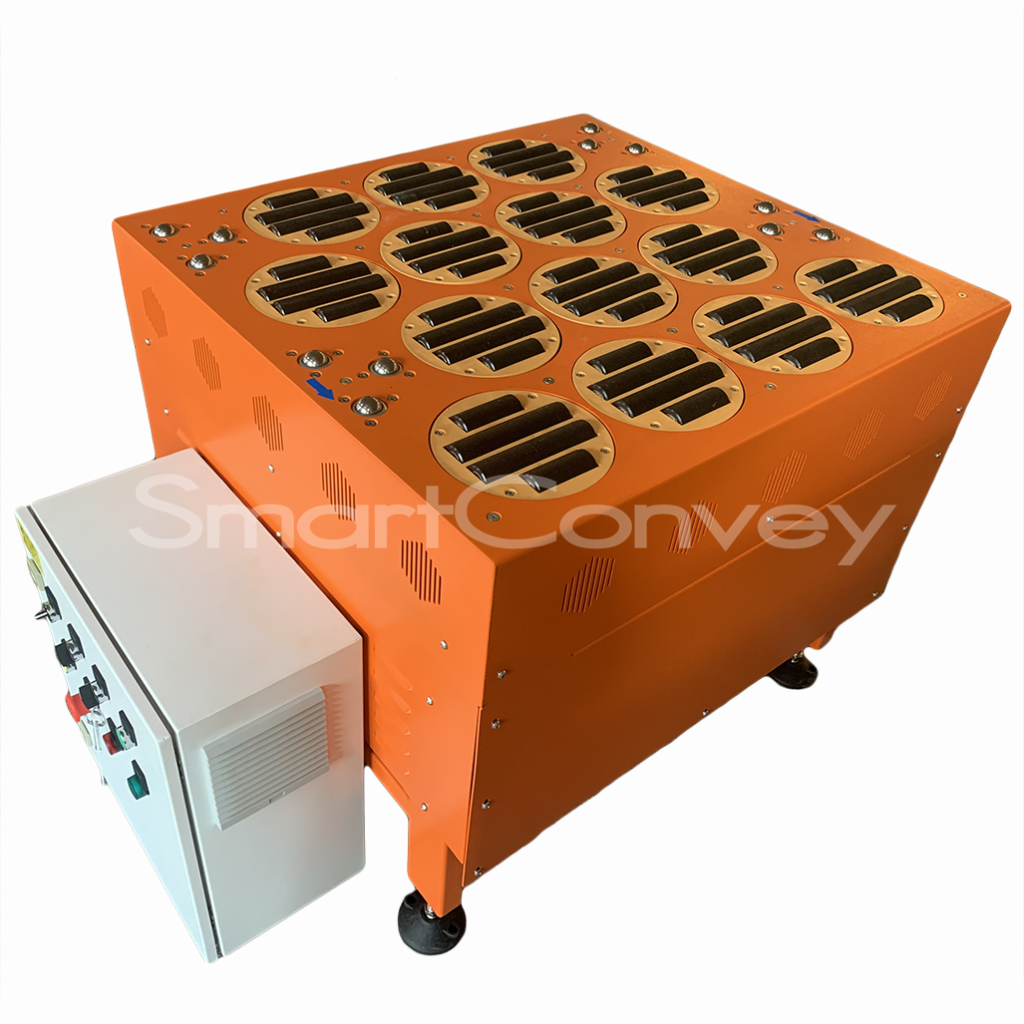
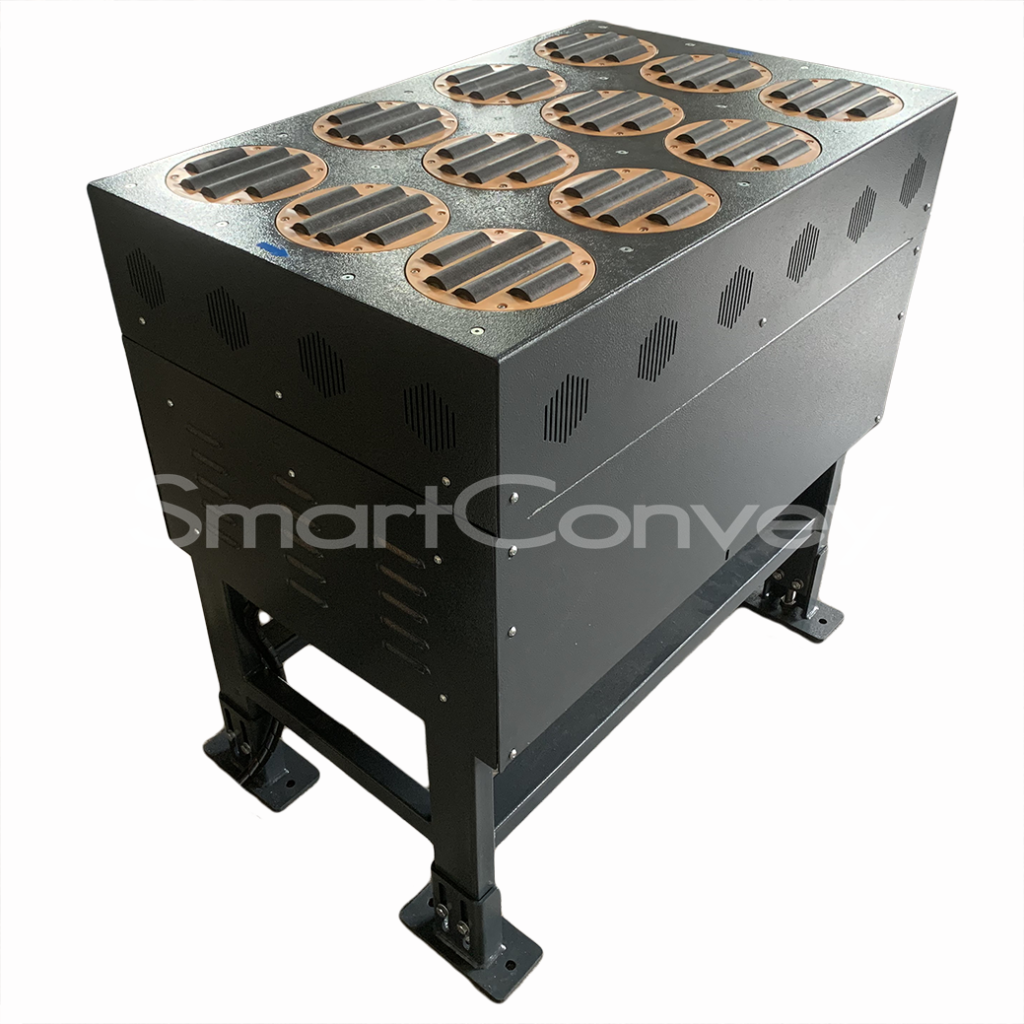
Advantage:
- Customizable: angle rotation powered by servo motors, for custom angles from 0 to 90, with a resolution of less than 1 degree. Suitable for high throughput and large packages.
- High resolution: Each disc is an independent power unit, designed for high-speed sorting, and can be sorted simultaneously in both directions. The polyurethane-covered rollers provide sufficient drive power to minimize speed loss during sorting. Maximum sorting speed of 7200 pieces per hour (theoretical).
- Low noise: New environmentally friendly materials and noise reduction technology provide a noise level as low as 75 dB.
- Energy-saving: lightweight materials and low energy consumption design structure.
- Flexible and stable sorting operation: in-line multi-row gimbal technology prevents vibration and damage to the goods conveyed. Heavy-duty ranges from light loads up to a maximum of 70 kg.
- Easy layout and maintenance: with the modular design of the units and the embedded combinations, sorting outlets can be placed anywhere on both sides of the conveyor line.
Disadvantage:
- In the maintenance of equipment, replace a new independent roller around 10mins.
Comparison of Wheel Sorter:
| No. | Parameter | O-Belt Wheel Sorter | Electrical Wheel Sorter | Electrical Friction Wheel Sorter |
| 1 | Picture |  |  | 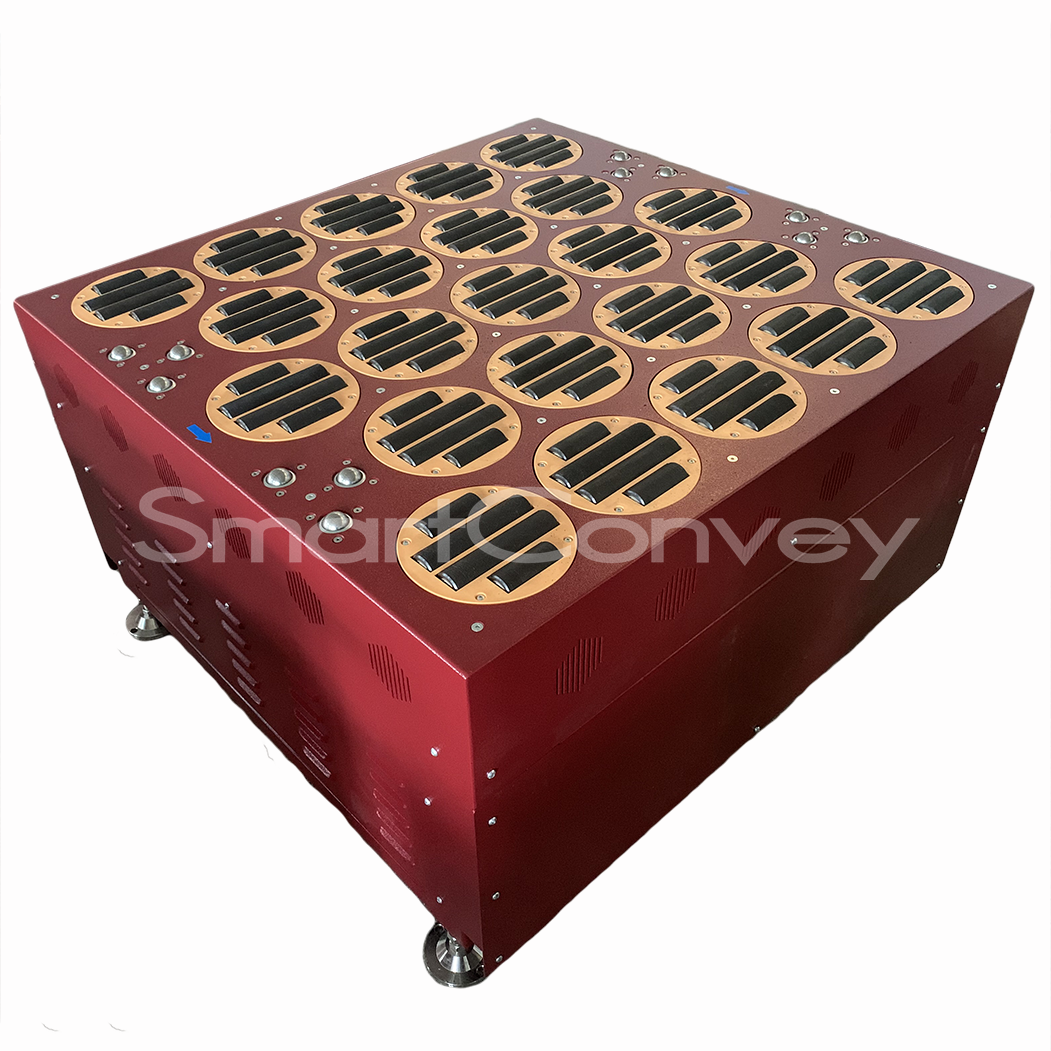 |
| 2 | Conveying Speed | 60~120m/min | 30~155m/min | 30~145m/min |
| 3 | Delivering Angle | 30/45/60 at Single&Double sided; 90 at Single-Sided | 30/45/60 at Single&Double sided | 30/45/60 at Single&Double sided |
| 4 | Min Parcels | 100mm*100mm*10mm | 200mm*150mm*10mm | 150mm*120mm*10mm |
| 5 | Max Parcels | 1000mm*1000mm*1000mm | 1000mm*1000mm*1000mm | 1600mm*1600mm*1600mm |
| 6 | Max Loading Weight | 30Kg | 80Kg | 60Kg |
| 7 | Maintenance | Replace a new piece of O-Belt around 1 hour | Replace a new independent roller around 10mins | Replace a new independent roller module around 10mins |
| 8 | Cost | Low | High | Medium |
| 9 | Sorting Capacity | 7200PPH(400mm Parcels) | 7200PPH(400mm Parcels) | 7200PPH(400mm Parcels) |
